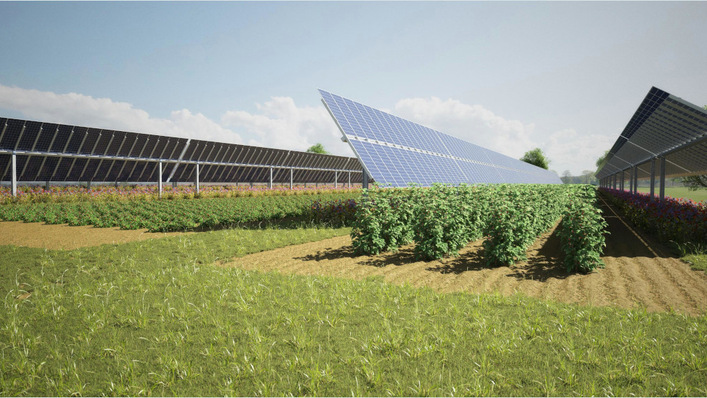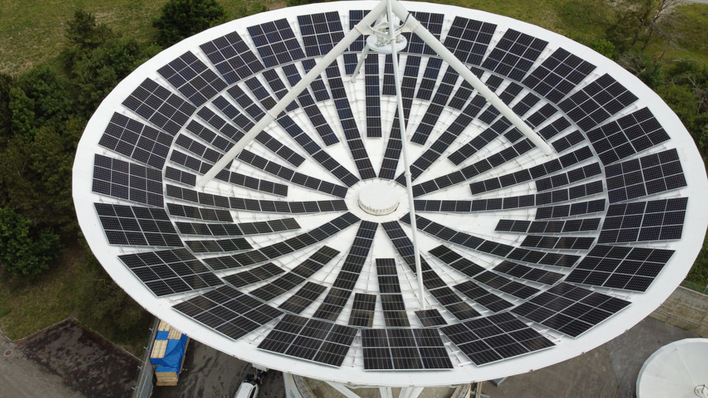Experts from the Renewable Energy Research Group at the Zurich University of Applied Sciences (ZHAW) have been measuring the yields of a photovoltaic system in the Davos-Parsenn ski resort in collaboration with the electricity utility of the Canton of Zurich (EKZ) since 2017. The modules of the system on the Totalp, a good 2,500 metres above sea level, are set at six different angles in order to measure how this angle affects the yields. The steeper the modules are positioned, the faster the snow slides off the surface, according to the theory.
See also: Switzerland aims for 50 per cent solar energy in the electricity mix
The researchers also wanted to know whether the modules deliver a lot of electricity at this height, especially in winter. In addition, some of the modules are bifacial, meaning they can also produce electricity on the back. This is also particularly advantageous in winter, when the white snow on the ground casts a lot of light onto the backs of the modules.
Lots of electricity in winter
Measurements in the test installation in the Davos-Parsenn ski resort have actually shown that with steeply staffed, bifacial solar modules, losses due to snow cover are only slight to actually negligible. With the system on the Totalp, the researchers were able to show that alpine solar systems can produce a lot of electricity, especially in the winter months. The prerequisite is, of course, that the modules are not covered by snow.
Lower losses due to steep angle
This is because snow on the modules can impair the electricity yield, especially in snowy winters. Measurements over the last six years show that for bifacial modules with an inclination of at least 60 degrees, the average yield losses due to snow cover in the winter half-year amounted to less than three per cent of the theoretical yield.
Vertical modules strong in winter
Vertically mounted modules are a speciality here. Due to the 90 degree inclination, the yield losses due to snow on the surface were actually less than one per cent. This is because almost no snow remains on these modules. As a result, they delivered the highest yields of all modules in winter, but fell short of the yields of the 30 or 60 degree tilted modules in the summer months.
Also interesting: New platform for Alpine solar plants
The additional yield due to the bifaciality was consistently around 24 per cent, which is slightly lower than the modules with an angle of 60 degrees. ‘The losses due to snow cover are negligible for bifacial modules inclined at more than 70 degrees in alpine regions,’ says ZHAW researcher Jürg Rohrer, summarising the entire series of measurements. Raphael Knecht, Head of Solar Business at EKZ, adds: ‘In our alpine projects, we choose steeply inclined, bifacial modules to maximise the winter yield. Several years of experience with the test system now confirm our planning that losses due to snow cover are minimised.’
Long-term measurement continues
However, the data now published is only an interim result. The long-term measurements will continue until 2027 in order to gather long-term experience in alpine solar power production. The continuous measurements should help to further optimise the system configurations and improve yields under Alpine conditions. Switzerland wants to use such systems to solve the problem that solar systems in the valleys and lowlands produce less electricity in winter. (su/mfo)









